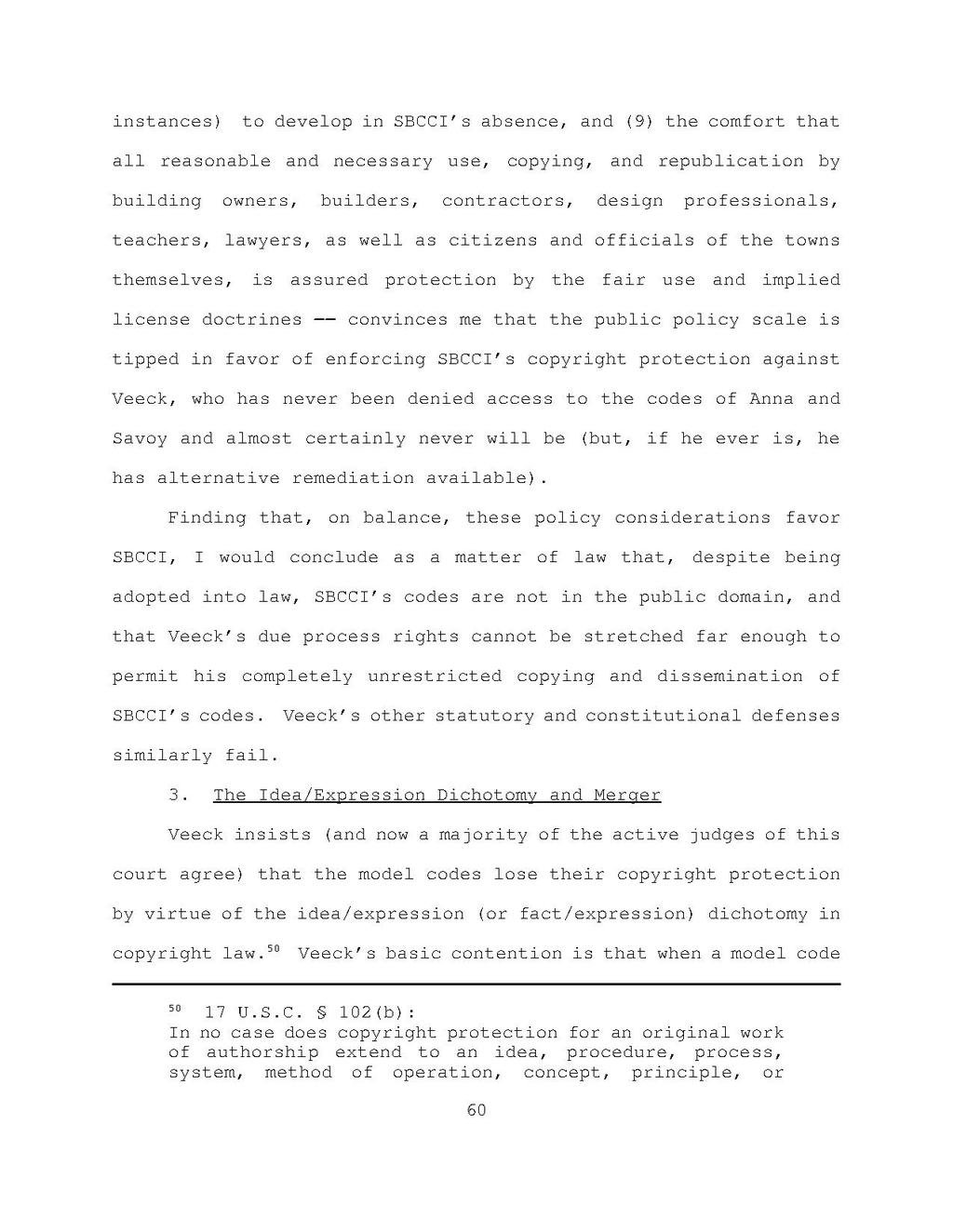instances) to develop in SBCCI's absence, and (9) the comfort that all reasonable and necessary use, copying, and republication by building owners, builders, contractors, design professionals, teachers, lawyers, as well as citizens and officials of the towns themselves, is assured protection by the fair use and implied license doctrines—convinces me that the public policy scale is tipped in favor of enforcing SBCCI's copyright protection against Veeck, who has never been denied access to the codes of Anna and Savoy and almost certainly never will be (but, if he ever is, he has alternative remediation available).
Finding that, on balance, these policy considerations favor SBCCI, I would conclude as a matter of law that, despite being adopted into law, SBCCI's codes are not in the public domain, and that Veeck's due process rights cannot be stretched far enough to permit his completely unrestricted copying and dissemination of SBCCI's codes. Veeck's other statutory and constitutional defenses similarly fail.
3. The Idea/Expression Dichotomy and Merger
Veeck insists (and now a majority of the active judges of this court agree) that the model codes lose their copyright protection by virtue of the idea/expression (or fact/expression) dichotomy in copyright law.[1] Veeck's basic contention is that when a model code
- ↑ 17 U.S.C.? 102(b): In no case does copyright protection for an original work of authorship extend to an idea, procedure, process, system, method of operation, concept, principle, or
60
